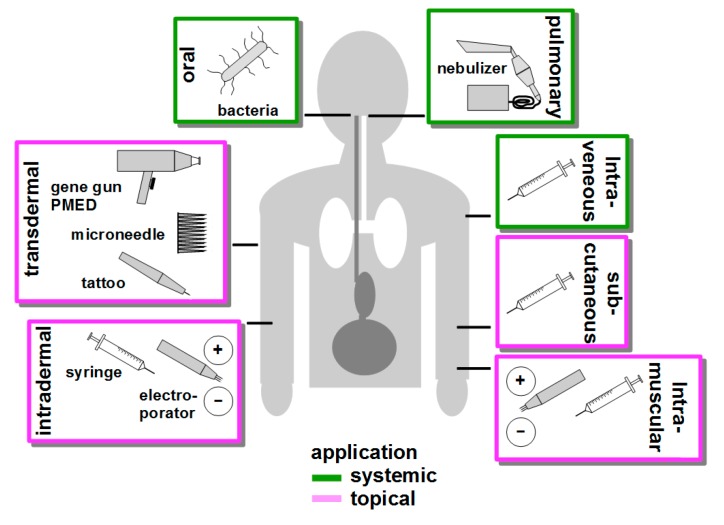Figure 3.
Routes of DNA vaccine delikvery. DNA vaccines may be delivered systemically by intraveneous injection to reach secondary lymphatic organs, by oral application of (attenuated) bacteria as a vehicle to confer uptake of DNA by intestinal APC, and by pulmonary administration of nebulized DNA to achive uptake by lung cells. Transdermal delivery primarily adresses LC, and both needle-free delivery of particle-adsorbed DNA vaccines by helium pressure (gene gun, PMED) and needle-based administration via microneedles and tattoo devices are clinically tested. Transfection of cutaneous APC as well as of non-APC by intradermally injected DNA vaccines is enhanced by immediate electroporation. Subcutaneous injection mainly results in transfection of fibroblasts and keratinocyts, which express transgenes and release antigen for uptake APC. Likewise, intramuscular injection of DNA vaccines primarily yields transfection of myocytes that express/release antigen for APC uptake, and myocyte transfection rates are enhanced by electroportion at the site of injection as well.

